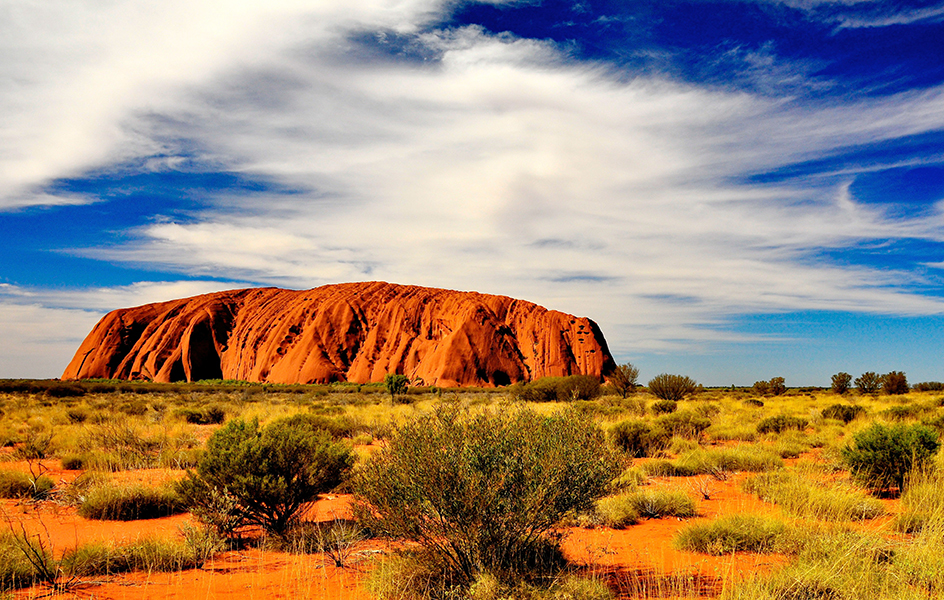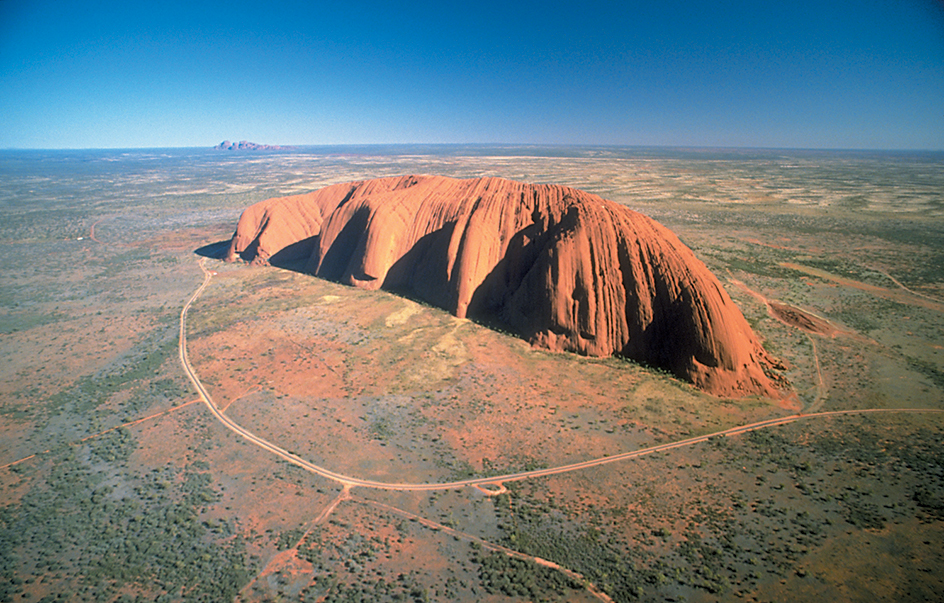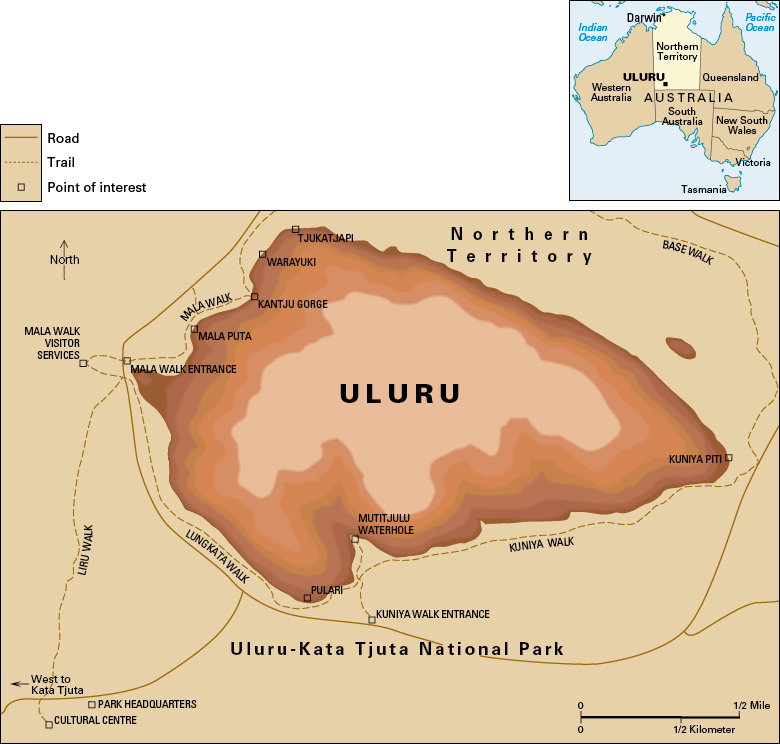Uluru, also known as Ayers Rock, is a giant outcrop of rock in the Northern Territory of Australia. It rises abruptly 1,100 feet (335 meters) from sand dune plains about 280 miles (450 kilometers) southwest of Alice Springs. The rock is more than 1 1/2 miles (2.4 kilometers) long and 1 mile (1.6 kilometers) wide. It measures 5 miles (8 kilometers) around its base. 

The rock’s coarse sandstone glows red during sunrise and sunset. Uluru consists of beds of arkose (sandstone containing feldspar minerals) that date back to the Cambrian Period, which lasted from 539 million years ago to about 485 million years ago. Similar rock lies at shallow depths under the sand plain surrounding Uluru. The erosion that formed Uluru probably started in the Cretaceous Period, from about 145 million to 66 million years ago.
Uluru is a place of spiritual significance for its traditional owners, the Anangu people, an Australian Aboriginal group. The Anangu people have looked after the land surrounding Uluru for tens of thousands of years. Uluru has many sacred sites and caves decorated with rock art.
The first European to see Uluru was the English explorer William Gosse in 1873. He named it Ayers Rock after Sir Henry Ayers, who was then the premier of South Australia. In 1873, Gosse became the first European to climb Uluru. The Anangu people do not climb the rock because of its spiritual significance.
In 1950, Uluru was officially made into a national park. The original name of the park was Ayers Rock National Park. In 1985, Australia’s government legally returned the land where Uluru stands to the Anangu. The Anangu then turned over the management of Uluru to the Australian government on a 99-year lease. In 1993, Ayers Rock National Park was officially renamed Uluru-Kata Tjuta National Park. Kata Tjuta, also known as the Olgas, is a group of large, rounded rock outcrops 20 miles (32 kilometers) west of Uluru.
In 1994, Uluru-Kata Tjuta National Park became a World Heritage Site because of its unique environmental and cultural importance. In 2000, Uluru-Kata Tjuta National Park hosted the start of the Summer Olympics in Sydney.
In 2017, the directors of the park voted to ban climbing on Uluru. Their reasons included respecting the wishes of the Anangu people, as well as concerns about safety and the environment. Uluru was permanently closed to climbers in 2019.

See also Alice Springs; Chamberlain case.
